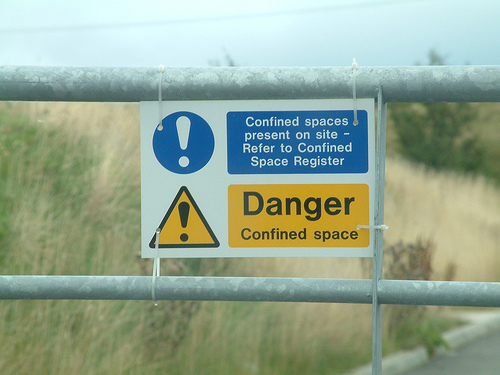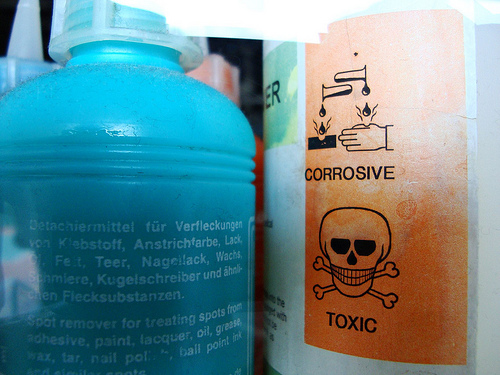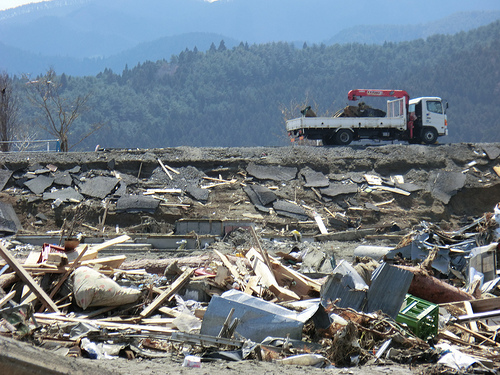The Occupational Safety and Health Administration (OSHA) adopted massive changes to its Hazard Communication Standard (HCS or Hazcom) effective May 25, 2012, updating chemical information, labeling and training requirements that had been in place since the 1980s. These revised requirements conform U.S. requirements to international guidelines under the U.N.-sponsored Globally Harmonized System of Classification and Labeling of Chemicals (GHS). Recognizing the extent of these changes, OSHA provided multi-year compliance phase-ins for employers whose workers manufacture, distribute or use chemicals (I’ve previously blogged about the changes here, here and here). The next such deadline is December 1, 2015, when distributors must only ship containers that meet the latest labeling requirements – so if you work for an employer that’s an end user of chemicals, all containers entering your facility must meet these requirements rather than the pre-2012 requirements.
Read MoreAudit, Compliance and Risk Blog
Tags: Health & Safety, OSHA, Environmental risks, Environmental, EHS, Hazcom
EPA Proposes Pharmaceutical Waste Management Requirements
Posted by Jon Elliott on Thu, Nov 19, 2015
 If your organization manages pharmaceuticals, do you know if any of its waste pharmaceuticals are regulated as “hazardous waste” under the Resource Conservation and Recovery Act (RCRA)? And do you know which ones, and why or why not?
If your organization manages pharmaceuticals, do you know if any of its waste pharmaceuticals are regulated as “hazardous waste” under the Resource Conservation and Recovery Act (RCRA)? And do you know which ones, and why or why not?
Tags: Health & Safety, OSHA, Environmental risks, Environmental, Hazcom, pharmaceuticals
Cal/OSHA has adopted final rules, effective October 1, 2015, that update the state’s regulations relating to storage battery systems and to changing and charging storage batteries. The purpose of this action is to update standards for storage batteries to address modern types of batteries in addition to clarifying regulations applicable to traditional lead–acid batteries.
Tags: Health & Safety, OSHA, California Legislation, Environmental risks, Environmental, Hazcom
Safety Programs Are Essential For The Automotive Workplace
Posted by STP Editorial Team on Tue, Sep 29, 2015
“No one should have to sacrifice their life for their livelihood, because a nation built on the dignity of work must provide safe working conditions for its people.”
– Secretary of Labor, Thomas E. Perez
Tags: Employer Best Practices, Health & Safety, OSHA, Employee Rights, California Legislation, Environmental risks, Environmental, Transportation
Meeting OSHA Requirements On Employee Exposure And Medical Records
Posted by Jon Elliott on Tue, Sep 22, 2015
A wide variety of Occupational Safety and Health Administration (OSHA) standards require employers to acquire or create documentation of employees’ exposures to potentially hazardous materials and contaminants in their workplaces, and to inform employees of the presence of these hazards. For example, the Hazard Communication Standard (Hazcom) requires most employers to acquire Safety Data Sheets (SDSs) and provide workplace labeling and employee training. Other standards require employers to monitor their workplaces for airborne exposures to contaminants, and to compare such exposures to permissible exposure limits (PELs) or action levels. Some standards require employers to conduct medical monitoring of employees who are subject to such exposures. These records can be vitally important to provide information on long-term (chronic) health effects of exposures.
Tags: Employer Best Practices, Health & Safety, OSHA, Employee Rights, EHS, Hazcom
OSHA Proposes To Expand Enforceability Of Injury And Illness Reporting Requirements
Posted by Jon Elliott on Tue, Aug 18, 2015
The Occupational Safety and Health Administration (OSHA) has just proposed to revise its requirement that employers prepare and maintain records of occupational injuries and illnesses as they occur – in “I&I Logs.” (I blogged about these requirements here). Employers must also post annual I&I Summaries in each workplace, and respond to survey questions if asked by OSHA or the Bureau of Labor Statistics.
Tags: Employer Best Practices, Health & Safety, OSHA, Employee Rights, Environmental risks, Environmental, EHS, Hazcom
Management of chemicals by your organization raises a host of environmental health and safety (EH&S) issues. Some of those issues are represented by legal and regulatory compliance requirements, others by formal but non-binding programs that range from company policies to ISO certifications. In response, organizations adopt and implement a wide variety of EH&S programs, including very broad ones (e.g., compliance with the Hazard Communication Standard) as well as very narrow ones (e.g., programs for managing entry into Confined Spaces). Organizations with sufficient resources and the will to organize themselves will create systematic programs to evaluate EH&S issues to ensure they’re addressed, and to design and coordinate programs in ways that do so effectively and efficiently. (In 2013-2014 I prepared a series of e-books that outlined EH&S regulatory requirements triggered by chemicals - click here to download).
Tags: Audit Standards, Health & Safety, OSHA, Environmental risks, Environmental, EHS, Hazcom
Last week the U.S. Occupational Safety and Health Administration (OSHA) issued its first detailed standard requiring employers in the construction sector to define confined spaces in their workplaces, and to implement training and safety programs to protect employees. This new standard incorporates longstanding requirements for most employers (what OSHA calls “General Industry”), with enhancements based on ongoing experience. Whether your organization is in construction, general industry, or another specialized sector, OSHA’s new standard provides a reminder to consider confined space safety in your workplaces. The following discussion summarizes the main issues and associated compliance requirements.
Tags: Business & Legal, Employer Best Practices, Health & Safety, OSHA, Employee Rights
The Occupational Safety and Health Administration (OSHA) adopted massive changes to its Hazard Communication Standard (HCS or Hazcom) effective May 25, 2012, updating chemical information, labeling and training requirements that had been in place since the 1980s. These revised requirements conform U.S. requirements to international guidelines under the U.N.-sponsored Globally Harmonized System of Classification and Labeling of Chemicals (GHS). Recognizing the extent of these changes, OSHA provided multi-year compliance phase-ins for employers whose workers manufacture, distribute or use chemicals. The next such deadline is June 1, 2015, when Safety Data Sheets (SDSs) must replace Material Safety Data Sheets (MSDSs) and end-user employers must ensure that their Hazcom programs reflect most of the revised requirements.
Tags: SDS, Health & Safety, OSHA, Environmental, EPA, Hazcom
Last weekend’s disastrous earthquakes in Nepal are a reminder that natural disasters can strike anywhere. Employers can and should plan for a broad range of events, and can apply guidance from occupational safety and health agencies standards when doing so. The U.S. Occupational Safety and Health Administration (OSHA) requires employers with specified activities to prepare and implement emergency action plans (EAPs), provides guidance for EAPs, and recommends that all employers prepare these plans. Employers can use this structure to prepare for earthquakes.
Tags: Corporate Governance, Employer Best Practices, OSHA, Environmental risks, Environmental, EHS, EPA









